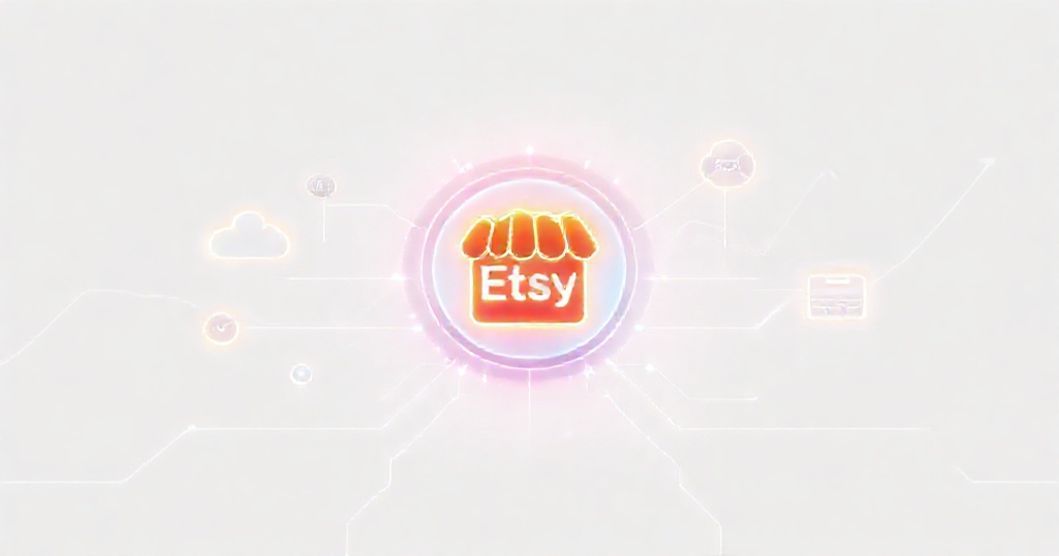In the dynamic world of e-commerce, Etsy sellers continuously seek ways to enhance efficiency and expand their business reach. Managing an Etsy shop effectively often extends beyond listing products and processing orders; it involves a sophisticated ecosystem of tools and platforms. This pursuit of streamlined operations frequently leads sellers to explore Etsy integrations, which are essential for automating tasks, synchronizing data, and connecting various aspects of their business. Understanding how these integrations function and which ones offer the most value can significantly transform a handmade business into a more robust and scalable enterprise, freeing up valuable time for creativity and growth.
Understanding Etsy Integrations: Core Concepts
Etsy integrations refer to the process of connecting your Etsy shop with third-party applications, software, or other e-commerce platforms. These connections enable data exchange and automated workflows, eliminating the need for manual data entry and reducing the potential for errors. The primary goal of implementing integrations is to create a more cohesive and efficient operational framework for your business. By allowing different systems to communicate seamlessly, sellers can centralize various tasks, from inventory management to financial tracking, providing a comprehensive view of their business performance and freeing up time previously spent on repetitive administrative duties.
Streamlining Inventory and Order Management
Effective inventory and order management are critical for any Etsy seller aiming to scale their business without overcommitting or underselling. Integrations play a pivotal role in this area by synchronizing product quantities across multiple sales channels. For instance, connecting your Etsy store with platforms like Shopify or Squarespace ensures that when an item sells on one platform, its stock level is automatically updated everywhere else. This prevents overselling and helps maintain accurate inventory records. Such tools typically offer features like bulk listing management, automatic order routing, and detailed sales analytics, providing a unified dashboard for all your product-related activities and improving the overall customer experience through prompt order fulfillment.
Automating Shipping and Fulfillment Processes
Shipping and fulfillment are often time-consuming tasks for Etsy sellers, but integrations can drastically simplify them. Solutions that connect your Etsy shop directly with shipping carriers or dedicated fulfillment platforms automate label creation, package tracking, and notification emails. Services such as ShipStation or Pirate Ship integrate with Etsy to import order details, allowing sellers to compare shipping rates, print labels in batches, and even schedule pickups. This automation not only saves countless hours but also reduces human error in addressing and postage calculations. Furthermore, automated tracking updates keep customers informed, contributing to higher satisfaction and fewer inquiries about order status, ultimately enhancing your brand’s professionalism.
Simplifying Accounting and Financial Tracking
Managing finances accurately is paramount for long-term business sustainability, and Etsy integrations can make accounting much simpler. Connecting your Etsy store with accounting software like QuickBooks, Xero, or FreshBooks allows for automatic synchronization of sales data, expenses, and transaction fees. These integrations eliminate the manual input of financial figures, ensuring that your books are always up-to-date and accurate. This real-time data flow is invaluable for tax preparation, budget planning, and understanding your business’s true profitability. By providing clear financial insights, these tools empower sellers to make informed decisions, identify profitable product lines, and optimize pricing strategies for enhanced financial health.
Boosting Marketing and Customer Relationship Management
Beyond operational tasks, Etsy integrations can significantly enhance your marketing efforts and customer relationship management (CRM). Tools that connect with email marketing platforms like Mailchimp or ConvertKit enable you to automatically add new customers to your mailing lists, facilitating targeted promotions and newsletters. Similarly, CRM integrations help you track customer interactions, manage inquiries, and personalize communication, fostering stronger customer loyalty. Integrating with social media schedulers can also streamline your content distribution, ensuring your latest products and promotions reach a wider audience. These combined efforts create a comprehensive approach to nurturing customer relationships and driving repeat business, all while maintaining a consistent brand voice across platforms.
Exploring Print-on-Demand and Dropshipping Integrations
For sellers utilizing print-on-demand (POD) or dropshipping models, integrations are the backbone of their business. Platforms like Printful or Printify integrate directly with Etsy, allowing you to create product mockups, push listings to your store, and automate order fulfillment. When a customer places an order on Etsy, the integration automatically sends the order details to the POD or dropshipping supplier, who then prints, packages, and ships the product directly to the customer. This hands-off approach eliminates the need for inventory storage and manual shipping, making it an incredibly efficient way to offer a wide range of products with minimal upfront investment. These integrations are essential for maintaining a seamless workflow from sale to delivery.
Choosing the Right Integration Solution: Key Considerations
Selecting the appropriate Etsy integration requires careful consideration of your specific business needs and goals. Begin by identifying your pain points: Are you struggling with inventory sync, shipping logistics, or financial tracking? Evaluate the features offered by various integration tools, ensuring they align with your operational requirements. Consider the pricing models; while some offer free basic plans, advanced functionalities typically come with a monthly subscription, which can range from a few dollars to several hundred depending on complexity and scale. Always check for user reviews and support quality. Prioritize solutions that offer robust customer service and clear documentation, as reliable support can be invaluable during setup and ongoing use. Compatibility with your existing tech stack is also crucial for seamless integration, ensuring all your systems work harmoniously.
Strategic Integration: A Path to Scalable Etsy Success
Embracing Etsy integrations is a strategic decision that empowers sellers to move beyond manual processes and embrace automation, leading to significant gains in efficiency, accuracy, and overall business growth. By carefully selecting and implementing the right tools for inventory, shipping, accounting, marketing, and specialized fulfillment, sellers can build a robust operational framework that supports scalability. These integrations not only free up valuable time but also provide critical insights necessary for informed decision-making and sustainable expansion. Ultimately, a well-integrated Etsy shop is better positioned to thrive in the competitive e-commerce landscape, allowing creators to focus on their craft while the technology handles the complexities of business management.






